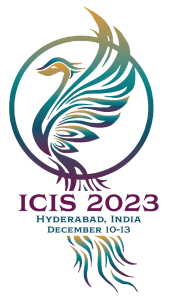Paper Number
1604
Paper Type
Completed
Description
Digital transformation (DT) continues to shake up firms and societies at large. Despite a growing number of studies covering a wide array of aspects of DT’s content, evidence of how DT unfolds in firms remains fragmented. Thus far, the literature has provided punctual insights into firms’ DT processes through single and multiple case studies. However, we lack a holistic understanding of the DT process. Adopting a qualitative meta-synthesis, we analyze 64 cases to inductively develop a DT process model depicting six phases (i.e., initiating, preparing, mobilizing, implementing, disseminating, and iterating). The process evolves on two levels—one rather sequential and one non-linear. We contribute to literature by introducing a synthesized process model tailored to DT’s complex nature. Besides, our model provides practitioners with a frame for assessing the progress of their DT journey and outlining a roadmap for their digital endeavor.
Recommended Citation
Sciuk, Christian; Engert, Simon Paul; Gierlich-Joas, Maren; Wagner, Till; and Hess, Thomas, "A Journey, not a Destination—A Synthesized Process of Digital Transformation" (2023). ICIS 2023 Proceedings. 18.
https://aisel.aisnet.org/icis2023/diginnoventren/diginnoventren/18
A Journey, not a Destination—A Synthesized Process of Digital Transformation
Digital transformation (DT) continues to shake up firms and societies at large. Despite a growing number of studies covering a wide array of aspects of DT’s content, evidence of how DT unfolds in firms remains fragmented. Thus far, the literature has provided punctual insights into firms’ DT processes through single and multiple case studies. However, we lack a holistic understanding of the DT process. Adopting a qualitative meta-synthesis, we analyze 64 cases to inductively develop a DT process model depicting six phases (i.e., initiating, preparing, mobilizing, implementing, disseminating, and iterating). The process evolves on two levels—one rather sequential and one non-linear. We contribute to literature by introducing a synthesized process model tailored to DT’s complex nature. Besides, our model provides practitioners with a frame for assessing the progress of their DT journey and outlining a roadmap for their digital endeavor.
When commenting on articles, please be friendly, welcoming, respectful and abide by the AIS eLibrary Discussion Thread Code of Conduct posted here.



Comments
14-DigitalInnovation